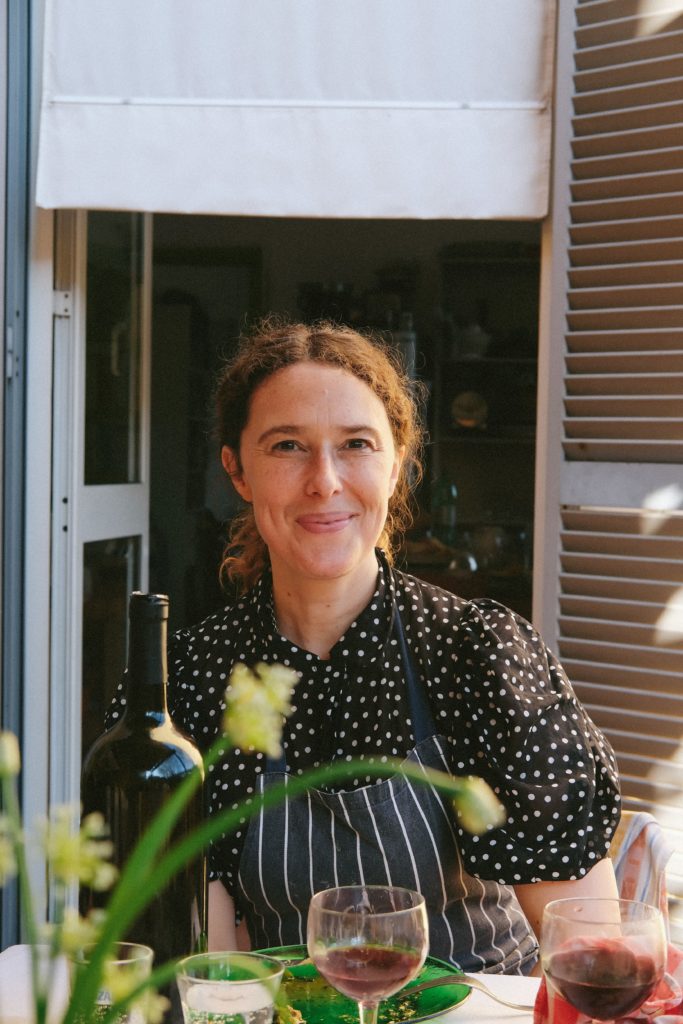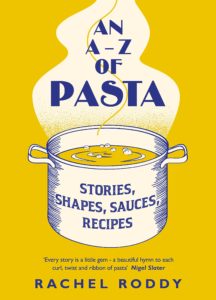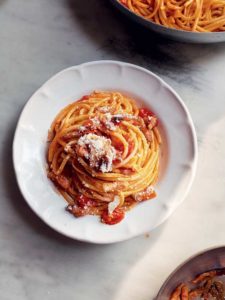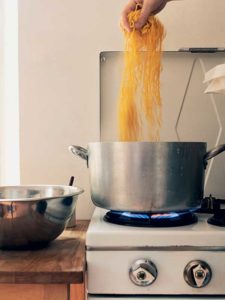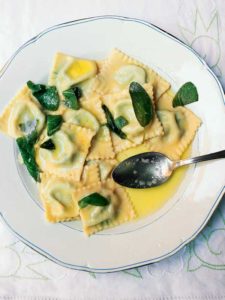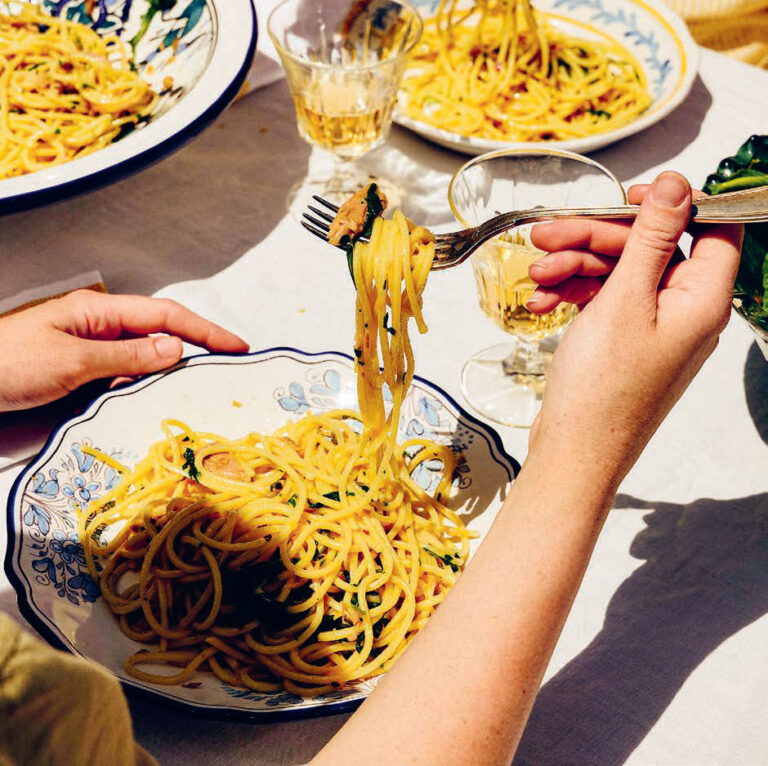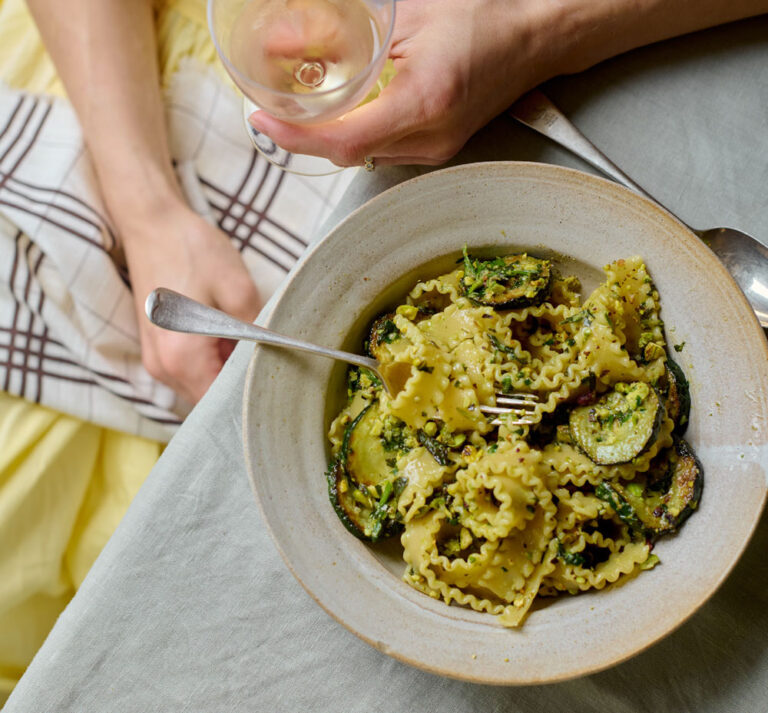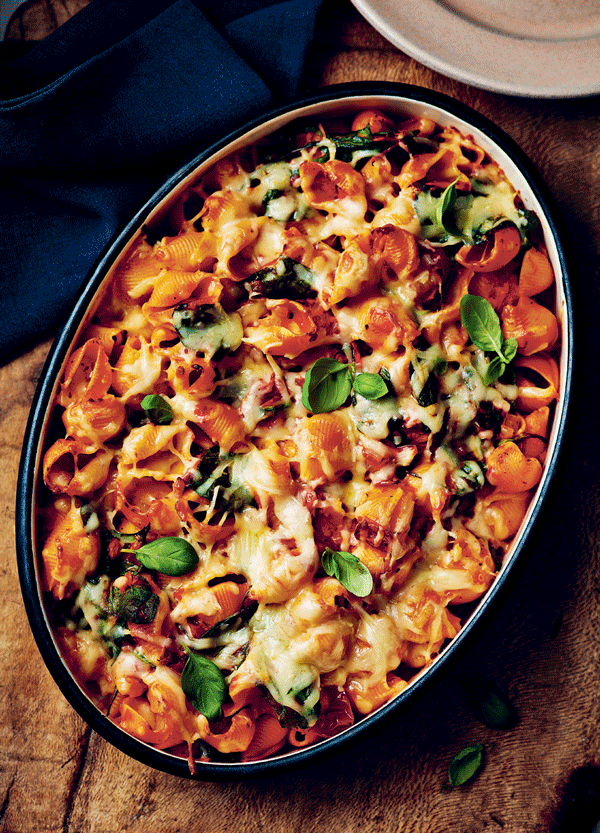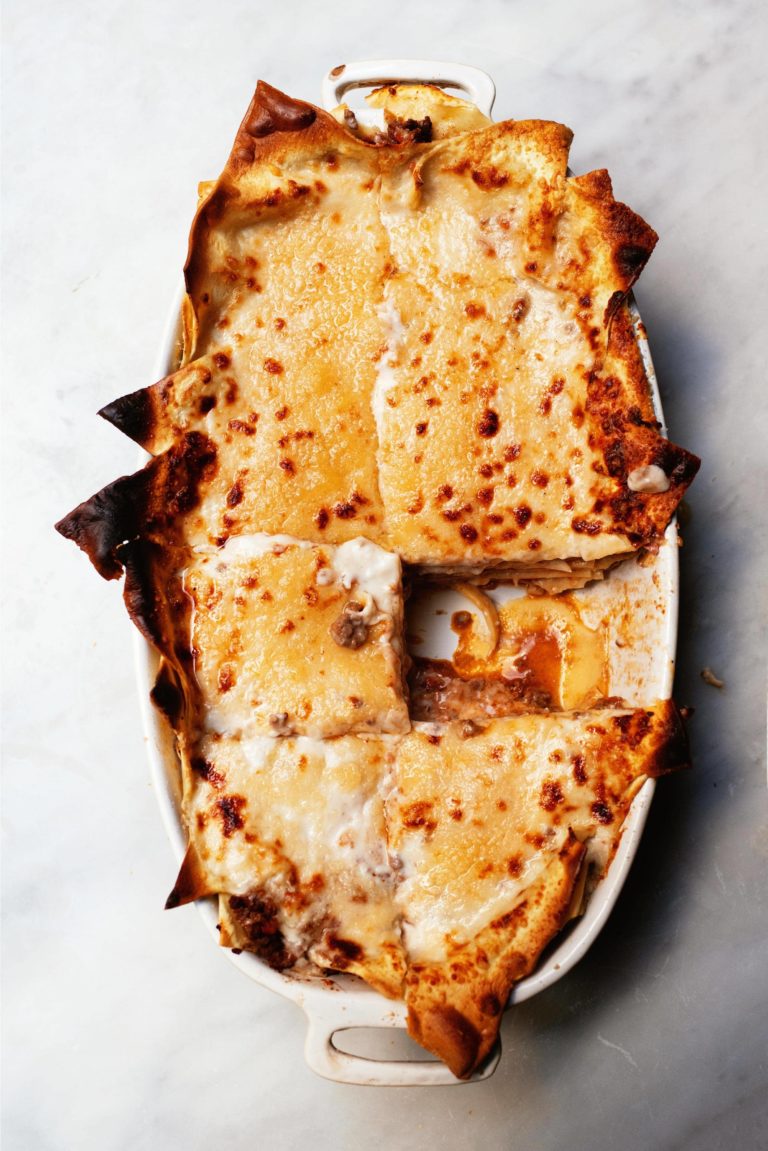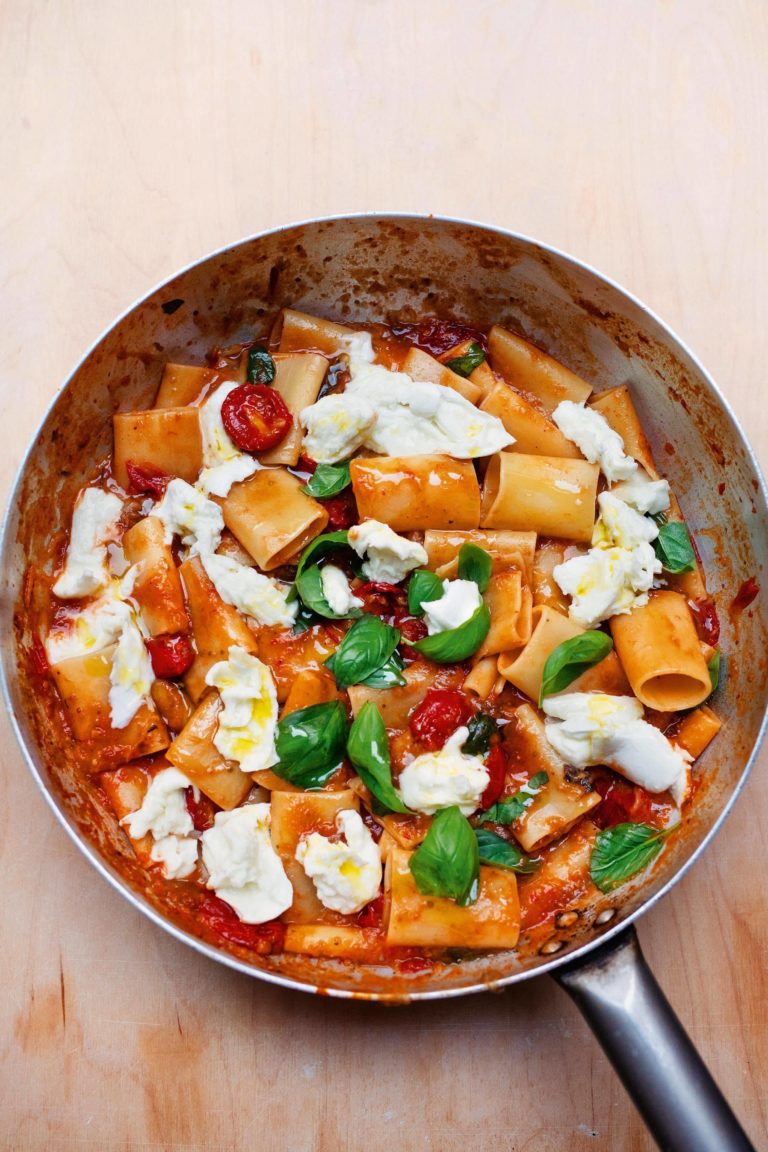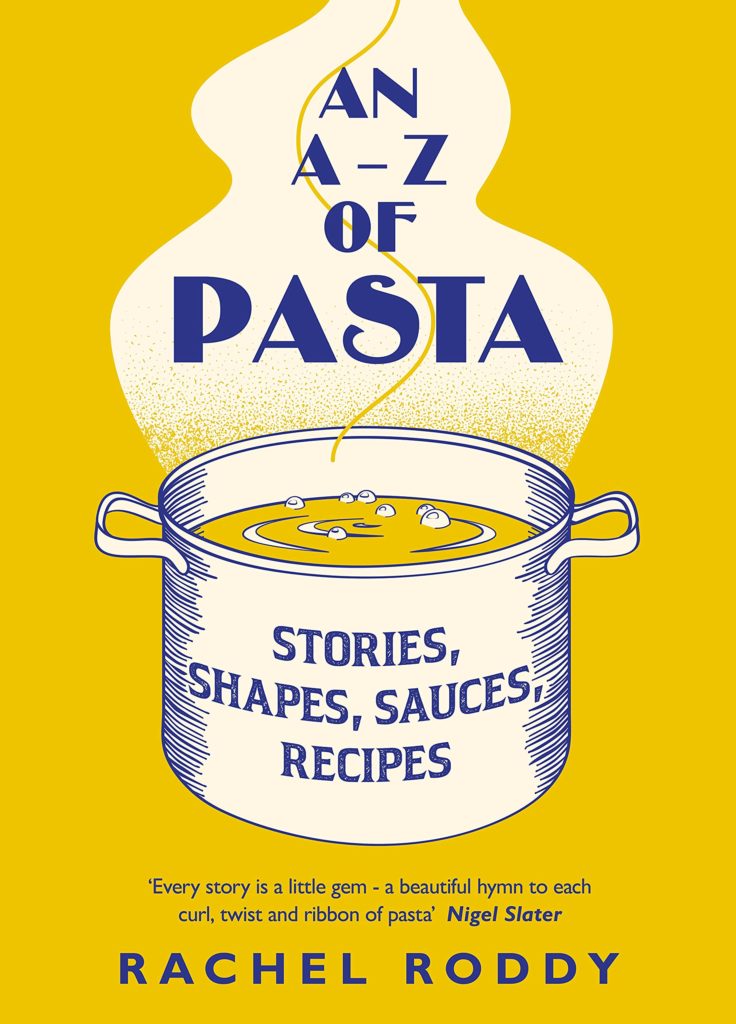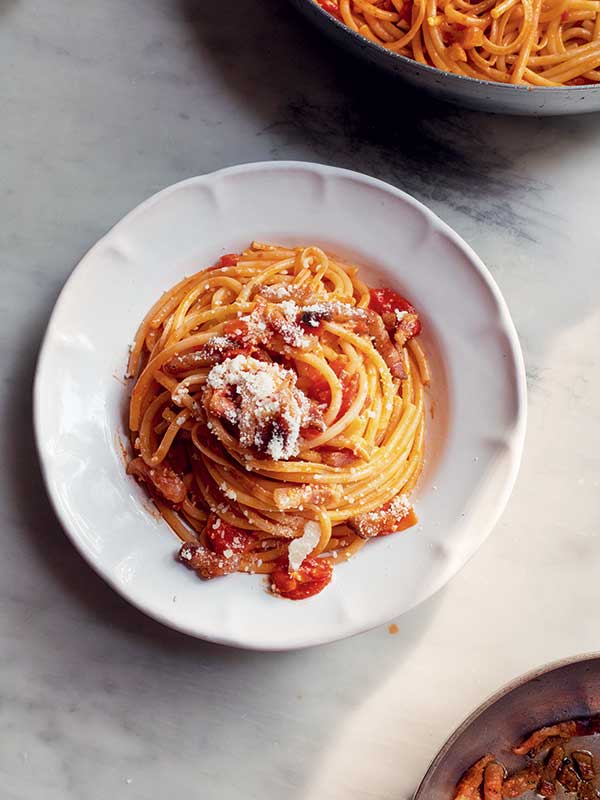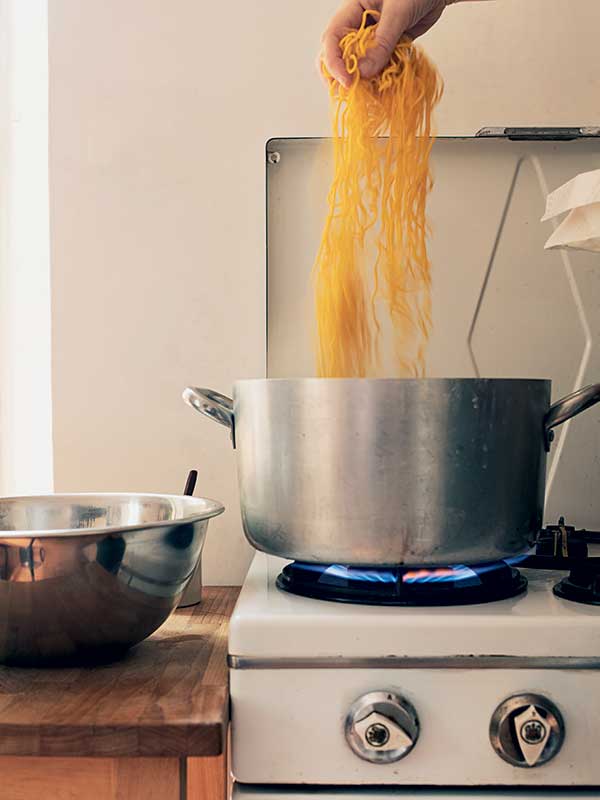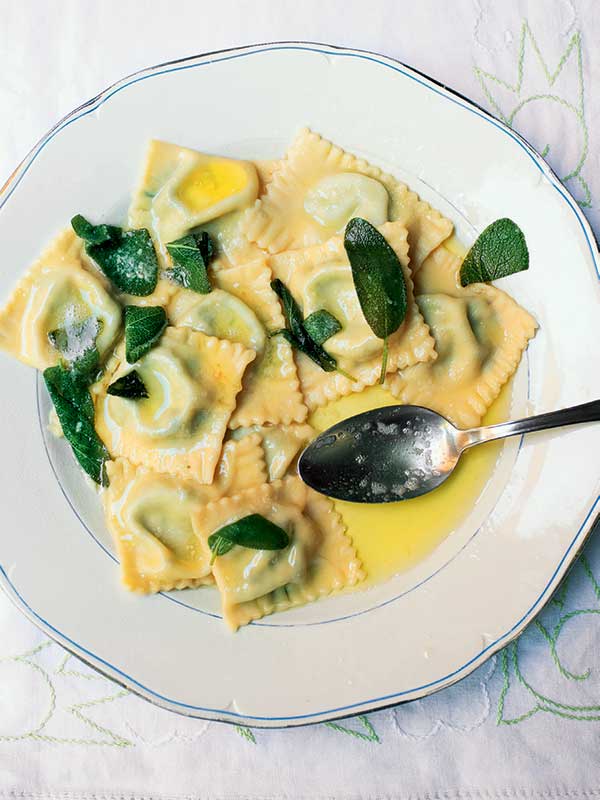Rachel Roddy’s Fresh Egg Pasta Dough
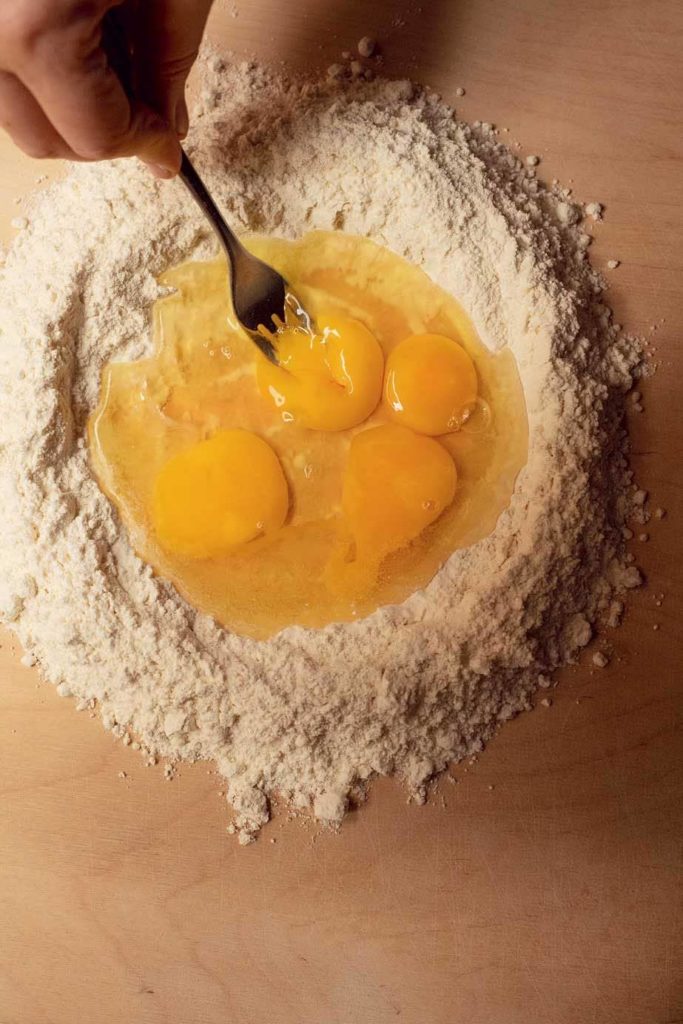
Rachel Roddy's recipe for fresh egg dough offers a definitive guide to mastering pasta-making at home, from kneading to rolling.
From the book
Buy From
Introduction
This is the foundation recipe for a fresh egg pasta dough, suitable for all the fresh egg pasta recipes in my book, An A-Z of Pasta – cannelloni, cappellacci, capelli d’angelo, fettuccine, pappardelle, quadrucci, tagliatelle, tagliolini, lasagne, ravioli, tortellini. The first time you make this, treat it as a game. Notice how the egg and flour comes together, how dry and scraggy it feels to start but how it softens as you knead. Weather, humidity, the flour, age of eggs and how dry your hands are all play a huge part in making pasta, the first step is to notice. Also identify your work-spot, keeping in mind you need a kneading area (wood is ideal because the surface friction does some of the work) and also a spot to spread out/ hang the rolled sheets.
The proportions are 2:1, with natural variations. For every 100g of soft white flour (00 or 0) you need 1 medium egg, 53–58g. So if you are making pasta for 4, you need 400g of flour and 4 eggs.
Ingredients
| 400g | soft white flour (00 or 0) |
| 4 medium | eggs |
Essential kit
You will need: a pasta machine.
Method
The traditional way to work is on a wooden board – making a mountain of flour then turning it into a volcano by swirling a crater in the centre with your fist and breaking the eggs into it. You can also work in a bowl, or in a food processor. Back with the crater, use a fork to break the egg yolks and whisk them gently before starting to incorporate the flour by knocking it from the inside edges of the crater and into the eggs. Once you have added enough flour that the eggs no longer run away, you can abandon the fork for hands (or one hand and a dough scraper) and continue to mix, bringing the flour and eggs into a soft scraggy ball.
Do not be tempted to add any more liquid at this point – put some music on, plant your feet firmly, and start kneading. How you knead is up to you – whatever works. I like using the heel of my hand to bring the bottom of the dough up and over and then rotate in a sort of rocking roll, until the dough starts to soften and smooth out – timings vary but this will take at least 5 minutes. If after kneading for a few minutes the ball is still looking dry or flaky, flick a few (just a few) drops of water on to the board then knead them into the dough – the aim is a smooth, firm but pliable dough with an almost talcum-like silkiness to touch. Once you are happy, leave the dough to rest, covered by a cloth, cling film or upturned bowl for at least 30 minutes otherwise it will not relax and will keep bouncing back when you roll.
Clamp a pasta machine to a work surface and set it to the widest setting. Cut the dough into four, take a quarter and put the other three back under the bowl. Flatten the first lump of dough into a patty and send it through the rollers. Then fold the strip of dough like an envelope and pass it through again, envelope again, then pass again. It will be the size of a small book. Set the machine at two and pass the dough through, but this time without folding, allowing it to come out of the machine and settle in folds, then extend it. Do the same with the third setting, and so on until you have rolled it through all the settings and have a long strip, which you can cut to make it more manageable. If it feels sticky, dust with flour. Repeat with all the other lumps of pasta. While there is no need to rush, the swifter you are the less chance there is of it drying out. How you cut the sheets depends on the shape you are making.
Reviews
Have you tried this recipe? Let us know how it went by leaving a comment below.
Thank you for your rating. Our team will get back to any queries as soon as possible.
Please note: Moderation is enabled and may delay your comment being posted. There is no need to resubmit your comment. By posting a comment you are agreeing to the website Terms of Use.
